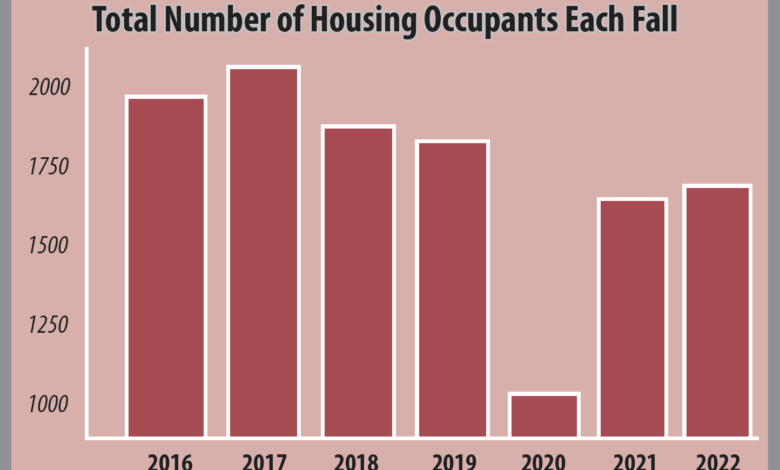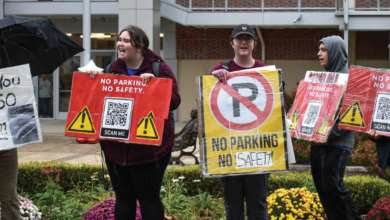
Rider reveals more than $30 million housing revenue lost due to COVID
IN 2017, Rider welcomed one of its largest freshman classes in recent memory. As a result, the school housed more than 2,000 undergraduate students that fall. When residents arrived at Rider University for the beginning of the school year from 2016 to 2019, the school reported more than 1,900 occupants each fall, according to statistics given to The Rider News
Once COVID-19 catapulted its way throughout the country, the university sent students home in March of 2020, expecting to return in a matter of weeks. Weeks became months, and Rider’s campus was one of many left desolate at the beginning of the 2020-21 school year, with classes mainly taking place via Zoom, in-person campus events nonexistent and strict social guidelines being enforced.
For a university that was already trying to find itself financially, the consequence was more than $30 million in lost revenue.
“It really creates a challenge,” said James Hartman, Rider’s vice president for finance and chief financial officer. “The model is that you have certain baseline expenses that you have that is generally supported by revenue. … You have a base model where you have to provide services, you have to provide dining options and everything for the students and that model generally doesn’t grow as much, sort of in conjunction as the residents grow.”
Rider issued refunds after sending students home in the spring of 2020 because of the pandemic and only registered 915 on-campus occupants in the fall; the result was approximately a $34 million loss in auxiliary revenue, according to an email from Vice President for Student Affairs Leanna Fenneberg.
The $34 million figure accounts for the 2020 and 2021 fiscal years, a nearly two-year span from July 1, 2019 to June 30, 2021. Nearly all of the vanished revenue is from refunds to students in the spring of 2020 and the more than 50% drop in residents the following fall. A small percentage of the auxiliary costs is from outside programs housed at Rider.
Residential numbers rose to a more stable number as restrictions eased heading into the 2021-22 school year; however, the number of residents were still not back to pre-pandemic figures. In the fall of 2021, Rider welcomed 1,605 occupants, and at the beginning of the 2022-23 academic year, that figure only grew by 10 students. In a Jan. 27 interview, President Gregory Dell’Omo said Rider has a capacity of nearly 2,400 beds.
“We’re talking anywhere from 500 to 800 empty beds on campus. That’s major revenue, and it’s just lost,” Dell’Omo said.
Removing the pandemic-plagued 2020-21 school year, the average rate of undergraduate students living on campus is 56% and first-year students 82%, according to Fenneberg.
When Dell’Omo interviewed for his current role, he said he met with Student Government Association (SGA) leaders and asked them the biggest issue surrounding Rider. Housing was a nearly unanimous answer, according to the university president.
Despite improvements in recent years, seven years after his appointment, Dell’Omo still sees housing as a problem for the university.
“We still have way too many of the old fashioned kind of dorms. Double occupancy, bathroom at the end of the hall, as opposed to the more suite-like, apartment-like housing that students really want today,” Dell’Omo explained.
The decrease in on-campus students that Rider faces mirrors a dip in enrollment the university is desperately trying to fix. When asked about the decrease in housing revenue since the fall of 2021 compared to that before the pandemic, Hartman said the university is facing an issue of “reduced revenue” rather than lost revenue. For the university to further itself on a path to financial stability, he emphasized the importance of Rider increasing the residents and overall enrollment.
“Over 90% of our revenue is from tuition, room and board,” Hartman said. “So the more that we can raise that revenue and get back closer to that 2,000, it’s hugely helpful.”


